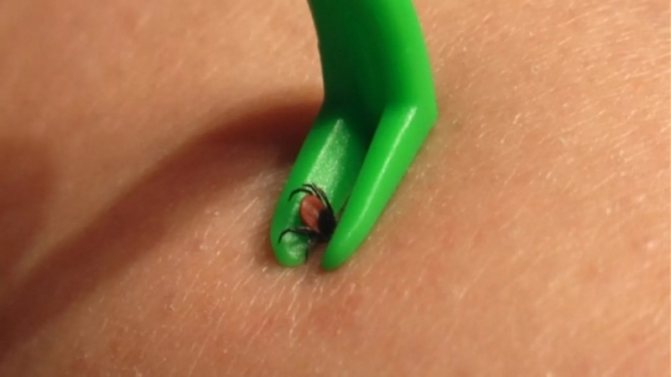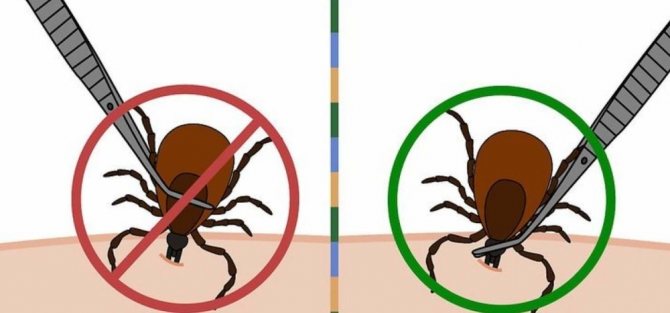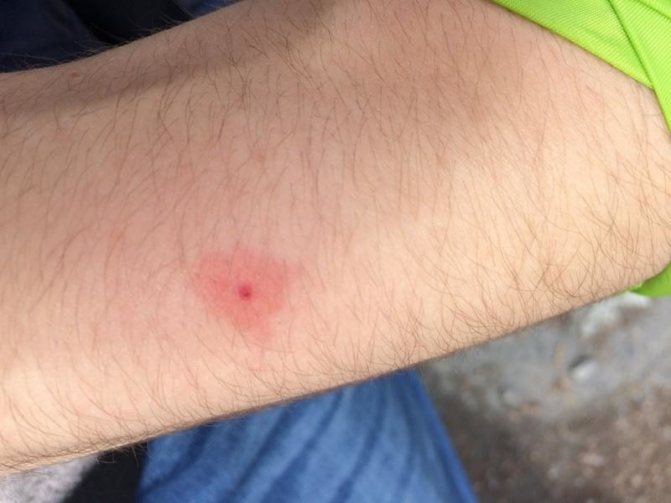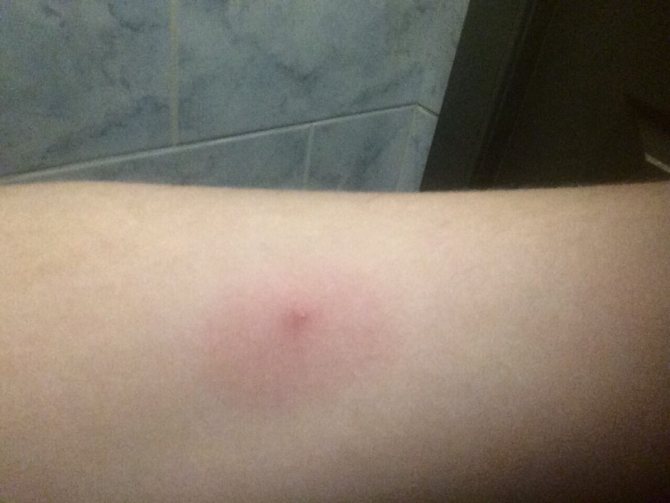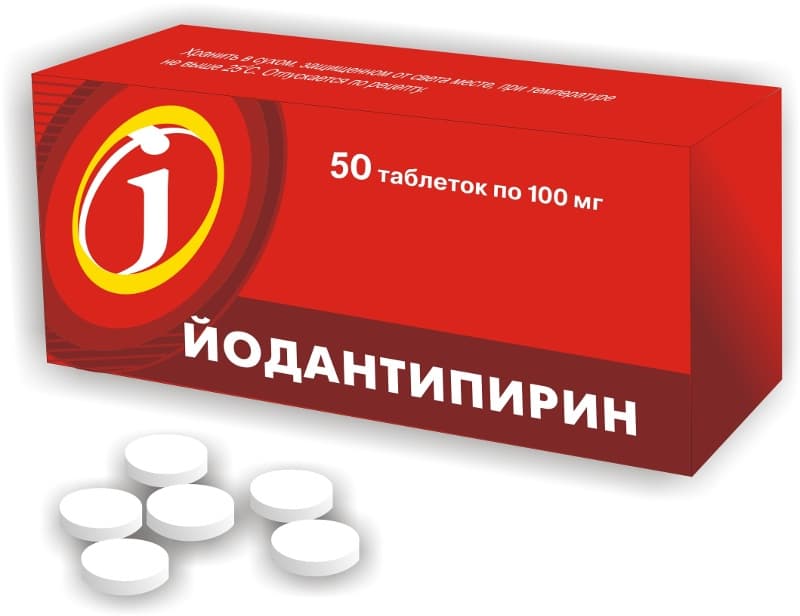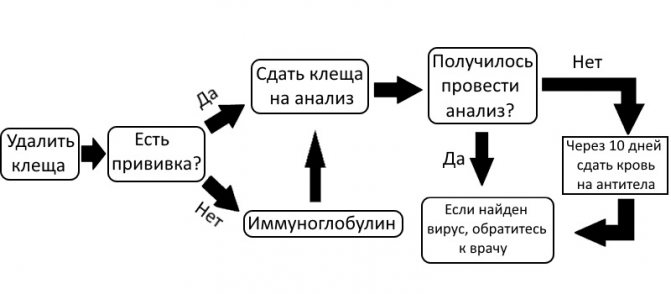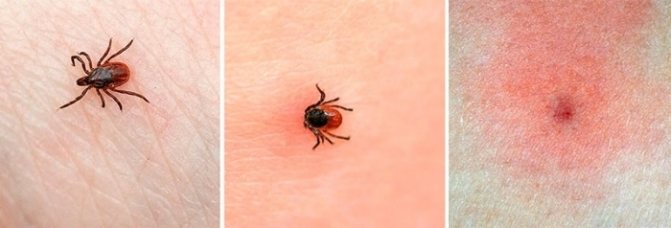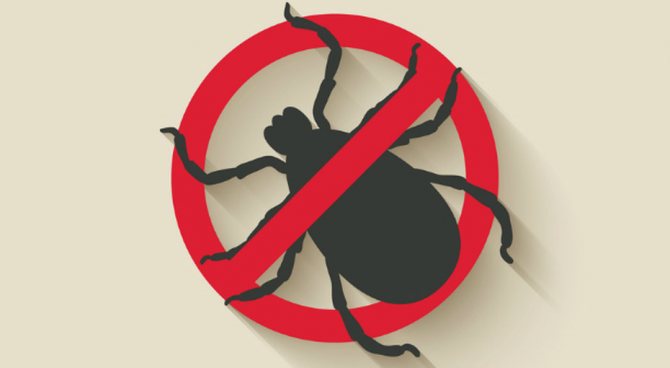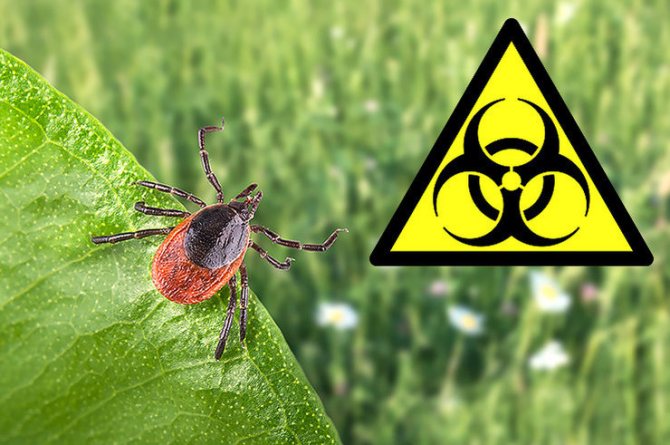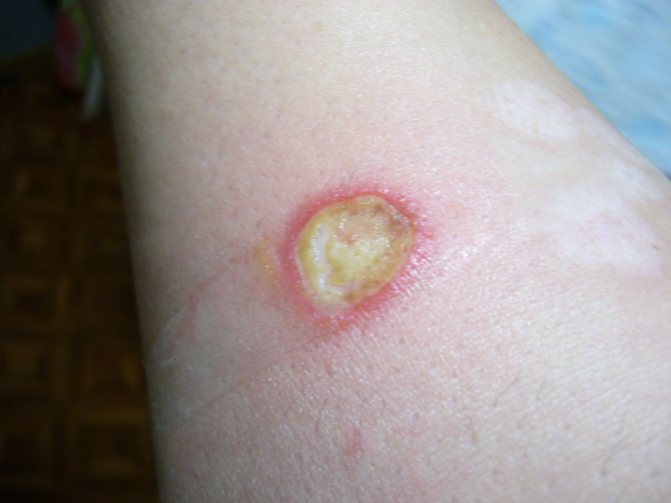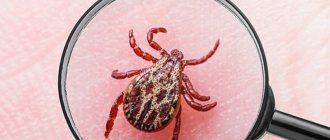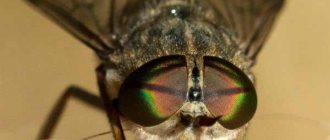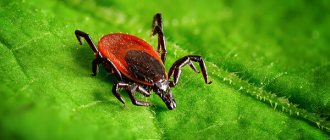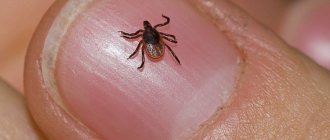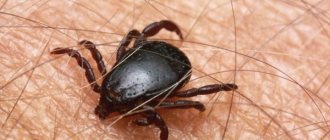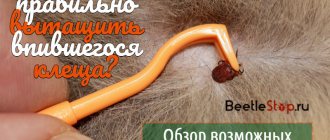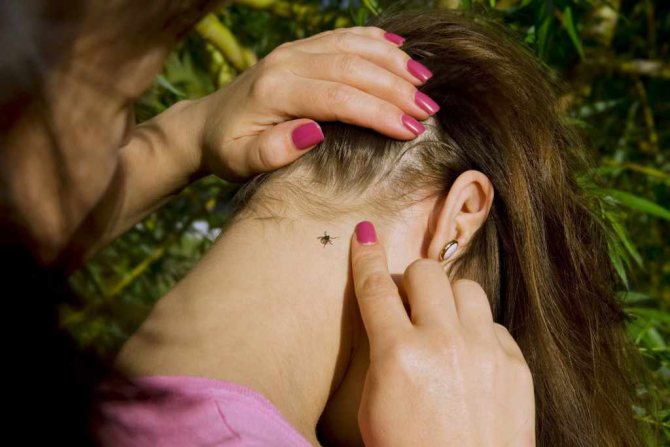
Ticks are carriers of numerous infections that lead to serious consequences.
Ticks are insects that pose a danger to human life and health. They are carriers of numerous infections that lead to serious consequences. They may not always be found on time. In this case, even one bite causes infection. When providing first aid for a tick bite, first of all, it is necessary to carefully remove the insect, and also take the patient for examination.
Seasonality and habitat


Bites most often occur in the spring and summer.
The periods of activity of ticks coincide with other insects. Contact most often occurs in the spring and summer. Insects are active when the temperature of the air and soil rises. Depending on the region, this can happen from April to May. The peak of tick bites in humans occurs in the summer months, however, even in late autumn, you can encounter insects.
In some regions, the activity of the parasite is significantly higher than in other subjects. Unfavorable situation in the following settlements:
- the northern capital and the Leningrad region;
- Kaliningrad;
- Ural federal district;
- Siberia (Irkutsk, Tomsk, Krasnoyarsk);
- Far East.
Complications after a bite
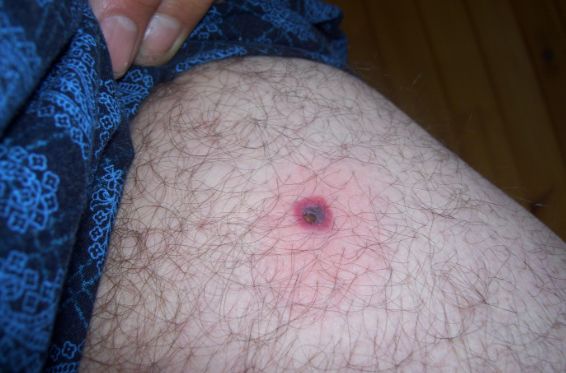

The consequences of contact with an insect can be dire. Important body systems are affected:
- cardiovascular - arrhythmia occurs, pressure jumps;
- CNS - often headaches, hallucinations, paralysis appear;
- lungs - pneumonia, pulmonary hemorrhage develops;
- joints - arthralgia, arthritis is formed;
- violated digestion, diarrhea appears.
If the disease is mild, lethargy with weakness continues for several months. After the body is restored.
With an illness of moderate severity, it will take about six months to recover. A severe form of pathology requires rehabilitation for 2-3 years, and then on condition that the victim did not have paresis and paralysis.
If the outcome was unfavorable, the person's quality of life deteriorates. The motor function is impaired, which worsens after physical and nervous fatigue, alcohol consumption, and during pregnancy. In the worst case, the victim becomes disabled or dies.
Algorithm of actions for a tick bite
The sooner you find a tick, the better your chances of preventing infection with the infections it carries. With the minimum time of skin contact with saliva, the risk of developing allergic reactions is reduced. The emergency rules for a tick bite include removing the parasite. This can be done according to the following scheme:
- grab the head of the parasite. Try to grab it as close to your skin as possible so as not to tear it off. Use tweezers or thread. If they are not at hand, grab the tick with your nails;


Grasp the head, not the body. - move the insect in different directions and try to pull it up a little. Do not make sudden movements, otherwise you risk tearing your head off your body. If the insect has already drunk blood, the swollen body can be twisted in one direction, as if pulling it out of the skin;
- after the tick has released the wound, place it in a sealable container.In the future, it must be transferred to the laboratory in order to confirm or deny the presence of infections;


The parasite should be placed in a closed container. - If you accidentally tore your head off your body, heat a sharp object (needle) over a fire or treat it with a disinfectant solution and gently try to pull the remaining parts out of the wound.
The bite can be treated with hydrogen peroxide.
After removing the tick, the bite site must be treated with an antiseptic solution. If you have a healing or antihistamine ointment on hand, use it. After helping with a tick bite, you need to take the person to the hospital in order to take emergency measures to prevent tick-borne infections.
How to remove a tick
The tick is pulled out with tweezers or a thread. In pharmacies, special forceps are sold to remove them. It is advisable to purchase them before the start of the summer season.
Several rules for deletion:
- You cannot pull on the torso. The tweezers are placed on the head.
- Pull out in a circular motion clockwise.
- Do not jerk sharply. It is necessary to smoothly twist the insect.
- It is important to try not to squeeze the parasite too much. This will lead to a protective reaction and the splash of hazardous substances into the human blood.
In no case should you use alcohol, oil, glue and other compounds to choke the tick.
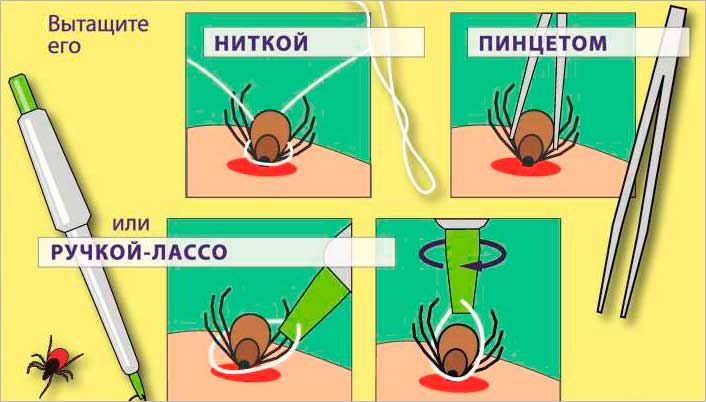

What can’t be done?
While following the first aid sequence for tick bites, it is important not to take actions that could harm the victim. When bitten, you can not do the following:
- drip oil or alcohol on the insect. These tick removal methods are rarely effective;
- try to burn the torso with fire. You can burn the insect, while the head remains in the wound;
- grab the tick with your fingers, trying to pull it off the skin. Thus, you will either tear your head off the body, or crush it;
- leave the parasite in place, ignoring the bite. The longer the contact between saliva and skin, the higher the risk of infection.
What to do if the head remains under the skin
It is almost impossible to remove the tick head separately from the body. If the patient is not afraid of pain, a needle can be used.
Algorithm of actions:
- Treat stainless steel needle with alcohol or heat.
- Treat the wound with alcohol or peroxide.
- Pick up the proboscis or head with a needle.
This option is unpleasant and does not always work. If you cannot reach the head with a needle, it is enough just to smear the wound with iodine and consult a doctor. You shouldn't hesitate. It is especially important to get professional help if suppuration has begun.
Some patients, from their own experience, advise applying Vishnevsky ointment to the wound. The head will come out in a day with pus. But it is best to go to a specialist so that he slightly dissects the skin and removes the foreign body.
Symptoms and treatment of complications
As soon as you find a tick bite, the insect needs to be urgently removed from the skin surface and the wound cleaned. Upon contact with the parasite, a red oval dot remains on the skin, the place itches. The temperature can rise to high levels. Symptoms depend on whether the person has contracted the infection or not. The most common diseases transmitted by bites include encephalitis and borreliosis.
Tick-borne encephalitis
When infected with the tick-borne encephalitis virus, the following symptoms appear:


General weakness and nausea.
- general weakness and nausea;
- a significant increase in temperature and even fever;
- migraine;
- the sensitivity of the scalp disappears;
- sleep worsens;
- the mucous membranes of the eyes become inflamed.
At the initial stage, encephalitis upon contact with a tick can be confused with the common flu. If not treated early, the infection affects the lymphatic and nervous systems.In severe cases, after a bite, paralysis occurs, a person loses sight or hearing, and death is not excluded.
Tick-borne borreliosis
Borreliosis after an insect bite causes the following symptoms:


The rise in temperature is accompanied by chills.
- severe migraine;
- aching muscles and joints;
- an increase in temperature is accompanied by chills;
- nausea and vomiting.
The most dangerous thing with borreliosis is that after contact with a tick, the signs do not appear immediately. In some cases, several months pass after infection, so a person does not associate symptoms with it. In this situation, pathological changes develop, in which the activity of the central nervous system, heart, joints is disrupted. The infection has a negative effect on all internal organs.
Other diseases
There are other infectious diseases carried by ticks. When bitten, a person can contract the following diseases:
- ehrlichiosis. Symptoms are similar to those of borreliosis. These are fever, fever, nausea, and so on. Signs appear after a week or two after contact;
- tick-borne typhus. A few days after infection, the temperature rises, the condition worsens, a specific rash appears on the body;
- acrodermatitis enteropathic. The skin itches a lot, inflammation and hemorrhage appear. Antihistamines are used to treat an allergic reaction.
Effects
The following are possible consequences of a tick bite if treatment was not carried out or was started late:
- damage to the nervous system (encephalitis, epilepsy, arthritis, hyperkinesis, paralysis, headaches);
- joint diseases (arthritis, polyarthritis) are not excluded;
- diseases of the cardiovascular system (arrhythmias, problems associated with high blood pressure);
- there is a threat of other diseases, such as pneumonia, associated pulmonary hemorrhage, nephritis, liver dysfunctions, and interruptions in digestion.
However, not only encephalitis can be a consequence of damage, other diseases after a tick bite can be viral, microbial, including rickettsial, protozoal infections.
Prevention and vaccinations
You can reduce the risk of a bite if you follow certain rules while walking in nature:
- clothing must be covered. Stop at light shades, on which the tick will be immediately visible;
- tuck in free areas of the outfit so that there are no exposed skin areas. Put on a headscarf or other headgear on your head;
- use a tick repellent if you go outdoors. Treat clothing or leather (according to instructions);
- avoid bushes and trees where insects are often found;
- After walking, check your clothes and skin for the parasite.
The most effective preventive measure is vaccination. It is advisable to vaccinate people who live in regions with a disadvantaged situation. At risk are employees whose activities are associated with frequent spending time in nature.
Today, 2 vaccination schemes have been developed - standard and accelerated. The difference is in the interval that lasts between the repeated administration of the vaccine. With the standard scheme, it is six months, with the accelerated one - from 2 weeks to 2 months. In Russia, vaccines of domestic and foreign production are used.
If a bite occurs upon contact with a tick, you must immediately remove the parasite from the wound and send it to the laboratory for research. The sooner this or that infection is detected, the more chances to quickly cure it and avoid health complications.
What parts of the body does the tick mainly bite on?
The parasite is selective. He almost never bites the skin where it is too thick or horny. The insect cannot dive too deep into the epidermis, which means it chooses more accessible areas.The exact point depends on where the parasite originally got to. For example, if he climbed onto the victim's chest, he is likely to bite around the neck. When it hits the feet, it often bites in the groin.
Other most common points of defeat:
- popliteal fossa (most often);
- buttocks;
- shoulders;
- forearm;
- neck;
- chest;
- stomach.
In children, ticks most often bite on the head, although very few such cases have been reported in adults. Men and boys are more prone to groin bites. Less often, the parasite is interested in places such as elbows, hands, face (in adults), feet and legs. These results were carried out after a massive study in Germany. Doctors were interviewed who recorded cases of bites of more than 10 thousand patients. For this reason, the statistics can be considered quite highly accurate.
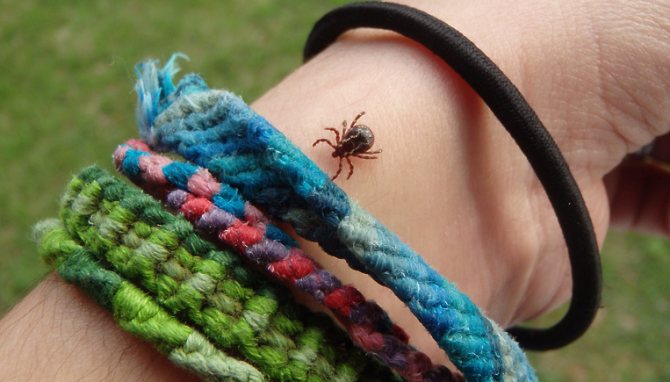

This does not mean that the patient can only protect the most vulnerable areas, and leave the rest open. If a person goes to the forest, dense field thickets, travels to an area with a high concentration of ticks, it is necessary to protect the whole body. You will need long pants, high-toed shoes, long sleeves and turtlenecks.
Treatment of victims
Treatment directly depends on the disease itself and the stage of development. With encephalitis, there are no specific treatments. If there are signs of damage to the central nervous system, the person is hospitalized without fail. Bed rest is respected, therapy includes the introduction of immunoglobulin.
Also, in the treatment, corticosteroid drugs are used, if meningitis is observed, vitamins B and C are injected in high doses. In some cases, antibiotics are prescribed.


With borreliosis (Lyme disease), antibiotics are used to suppress the pathogen. If the disease is accompanied by disorders associated with neuralgia, the patient is hospitalized, treatment is applied using blood substitutes, corticosteroids, nootropics and vitamin complexes.
The earlier the diagnosis is made and the correct treatment is used, the easier it is to cope with the virus without complications, severe forms and lack of timely treatment lead to disability and even death.
Actions after deletion
As already mentioned, the bite itself is quite dangerous for people who suffer from allergic reactions. With an attack, a severe form of allergy may develop, in which there is swelling of the face, muscle pain, difficulty breathing.


With such a reaction of the body, it is necessary to take an antihistamine. Such drugs include Suprastin, Zirtek, Claritin. It is necessary to ensure that the victim has a normal air supply, undo the top buttons on the clothes. Be sure to call an ambulance, the patient is prescribed treatment in the hospital.
Attack and bite
These small parasites have a well-developed oral apparatus with a hypostome, with the help of which they gnaw through the skin. The oral apparatus has microscopic growths that resemble a harpoon in structure, which allows them to be firmly held in the wound when saturated.
Infected individuals are able to transmit the disease virus to a person in the first minutes of a bite. If an individual is a carrier of encephalitis, the virus is transmitted through the tick's saliva. Even if the sucked individual is found immediately after it has adhered to the body and was quickly removed, there is a risk of infection.
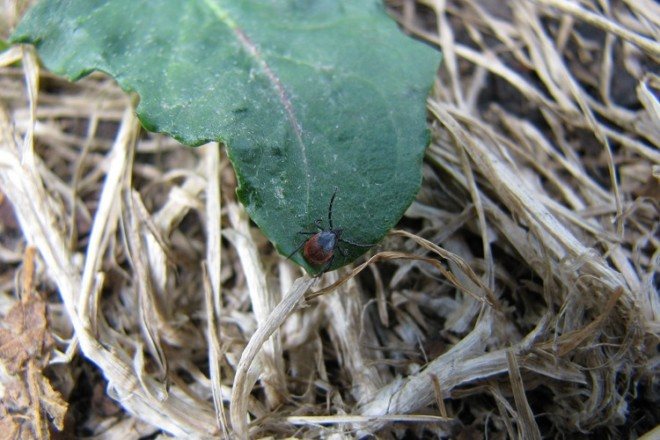

The Lyme disease virus is found in the food of the insect's gastrointestinal tract, so every minute counts in this case. The parasite can share with a person the products of the gastrointestinal tract already at 5-6 hours of the saturation process. The likelihood of contracting viruses is greatly increased when the parasite is removed from the wound incorrectly.
With reddening of the skin at the site of an insect attack, do not make premature conclusions and think that an infection has occurred.Symptoms do not appear immediately, and redness and irritation is an allergic reaction to the bite.
Explicit external symptoms are observed with borreliosis, when focal erythema appears in the place where the sucked tick was, which has a regular round shape and a red border. After a day, the erythema becomes pale and becomes bluish, scarring appears, as a rule, after 10-14 days it completely disappears.
Signs of an attack
The first signs may appear several hours after the attack of the bloodsucking. Each symptom manifests itself individually, some may not feel any changes at all. Possibly the appearance of weakness and fatigue, fever and chills, photophobia.
Vivid symptoms are most often observed in older people, children, as well as those who suffer from immunodeficiency pathologies or allergies. Itching, headache, decreased blood pressure, and enlarged lymph nodes may appear. In severe cases, breathing problems appear, in rare cases, hallucinations are observed.
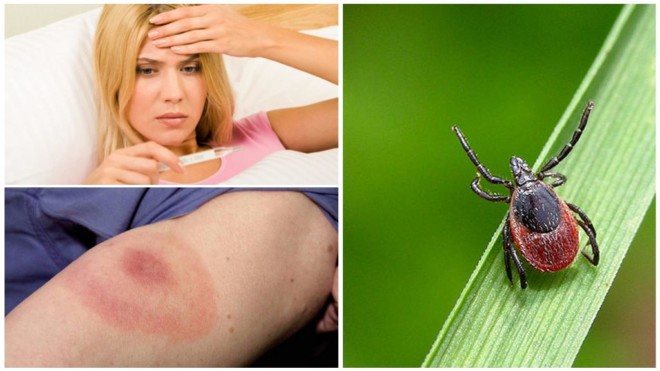

Remember that all the symptoms that occur immediately after the attack do not indicate the presence of an infection in the body, they usually arise due to the body's reaction to the saliva of the parasite. Symptoms should be feared if it appears some time after the attack has occurred. Since the virus that has entered the body goes through an incubation period and at first does not manifest itself in any way, only after this period do the signs and symptoms of the disease appear.
When are ticks most dangerous?
The peak of danger in the Moscow region and other regions of Russia is in the spring and summer (June-July). Insects love moist, dark places, and are most active in the evening and morning.
When it is very hot or raining, ticks do not bite. They crawl from the bottom up, do not fall from tall bushes or trees, and attack from tall grass.
The insect bites painlessly. After a couple of days, a slight aching pain will be felt - inflammation develops at the site of the bite.
If you notice a tick on yourself, you can remove it yourself or go to the hospital. After removal, it is imperative to take the insect for research. This will tell you if it has been infected.

